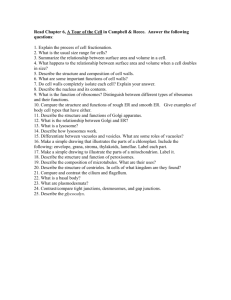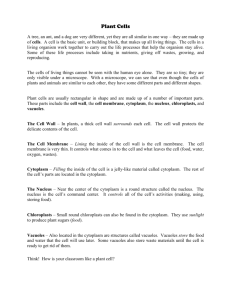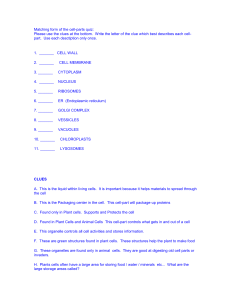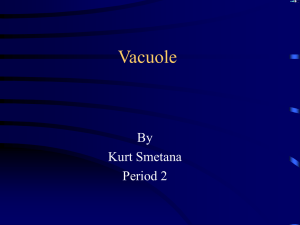Vocabulary Inventory
advertisement
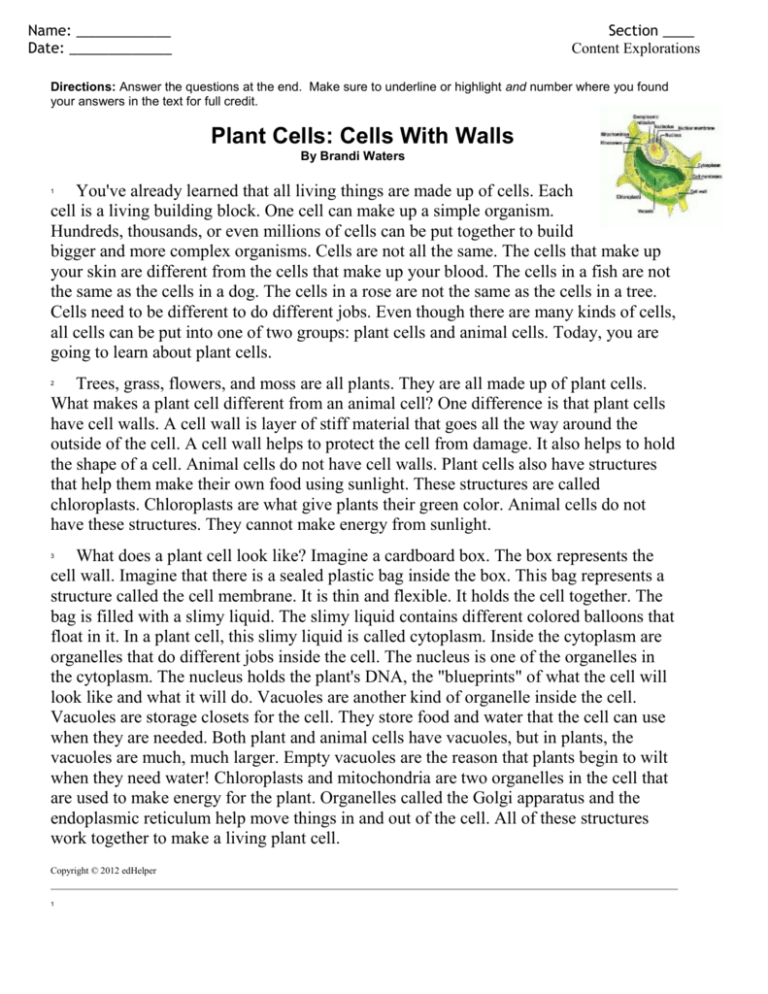
Name: ____________ Date: _____________ Section ____ Content Explorations Directions: Answer the questions at the end. Make sure to underline or highlight and number where you found your answers in the text for full credit. Plant Cells: Cells With Walls By Brandi Waters You've already learned that all living things are made up of cells. Each cell is a living building block. One cell can make up a simple organism. Hundreds, thousands, or even millions of cells can be put together to build bigger and more complex organisms. Cells are not all the same. The cells that make up your skin are different from the cells that make up your blood. The cells in a fish are not the same as the cells in a dog. The cells in a rose are not the same as the cells in a tree. Cells need to be different to do different jobs. Even though there are many kinds of cells, all cells can be put into one of two groups: plant cells and animal cells. Today, you are going to learn about plant cells. 1 Trees, grass, flowers, and moss are all plants. They are all made up of plant cells. What makes a plant cell different from an animal cell? One difference is that plant cells have cell walls. A cell wall is layer of stiff material that goes all the way around the outside of the cell. A cell wall helps to protect the cell from damage. It also helps to hold the shape of a cell. Animal cells do not have cell walls. Plant cells also have structures that help them make their own food using sunlight. These structures are called chloroplasts. Chloroplasts are what give plants their green color. Animal cells do not have these structures. They cannot make energy from sunlight. 2 What does a plant cell look like? Imagine a cardboard box. The box represents the cell wall. Imagine that there is a sealed plastic bag inside the box. This bag represents a structure called the cell membrane. It is thin and flexible. It holds the cell together. The bag is filled with a slimy liquid. The slimy liquid contains different colored balloons that float in it. In a plant cell, this slimy liquid is called cytoplasm. Inside the cytoplasm are organelles that do different jobs inside the cell. The nucleus is one of the organelles in the cytoplasm. The nucleus holds the plant's DNA, the "blueprints" of what the cell will look like and what it will do. Vacuoles are another kind of organelle inside the cell. Vacuoles are storage closets for the cell. They store food and water that the cell can use when they are needed. Both plant and animal cells have vacuoles, but in plants, the vacuoles are much, much larger. Empty vacuoles are the reason that plants begin to wilt when they need water! Chloroplasts and mitochondria are two organelles in the cell that are used to make energy for the plant. Organelles called the Golgi apparatus and the endoplasmic reticulum help move things in and out of the cell. All of these structures work together to make a living plant cell. 3 Copyright © 2012 edHelper 1 Plant Cells: Cells With Walls 1. There are ______ main groups that all cells can be put into. Fifty Seven Two Five 3. Name two things that make plant cells different from animal cells? 5. The ______ holds the cell's DNA. 2. Which of these is not a plant? A mushroom Moss A tree Grass 4. The job of the ______ is to hold all of the parts of a cell together. Golgi apparatus Cell membrane Vacuole Cell wall 6. ______ give plants their green color. The cell wall Vacuoles Chloroplasts The Golgi apparatus

